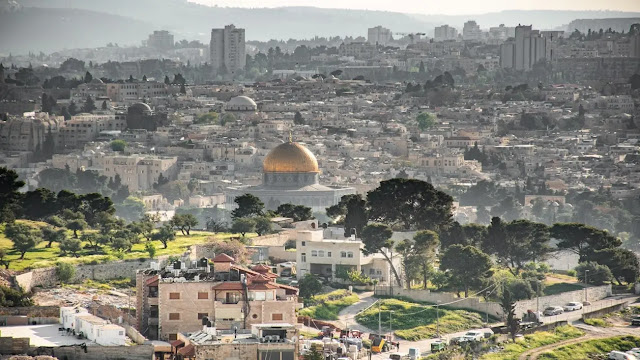Emperor Julian, who held the position of Roman Emperor from 361 to 363 CE, is remembered for his brief attempt to revive paganism within the Roman Empire. Reconstructing the Jewish Temple in Jerusalem was one of the most ambitious projects Julian undertook during his short rule.
King Herod the Great commissioned a magnificent structure, known as Herod's Temple, to be built in Jerusalem. The First Temple, which was destroyed by the Babylonians in 586 BCE, was replaced by this one.
Around 19 BCE, the construction of the Second Temple began and was finished in 64 CE. The temple was crucial to Jewish worship until its destruction by the Romans in 70 CE during the First Jewish-Roman War.
Although the Jerusalem Temple was demolished in 70 and remained in ruins for centuries, Julian surprisingly declared his plans to rebuild it. After several mysterious unfortunate events were reported to have occurred on the construction site, the construction was abruptly halted and never restarted. What actually occurred?
Why Did Julian Take Such Action?
Julian made the decision to rebuild the Jewish Temple because he believed that the restoration of the Temple in Jerusalem would be in conflict with the Bible prophecy. The prediction was that it would never be restored again
Matthew 24:1-2 (New International Version):
"Jesus left the temple and was walking away when his disciples came up to him to call his attention to its buildings. 'Do you see all these things?' he asked. 'Truly I tell you, not one stone here will be left on another; every one will be thrown down.'"
The Futile Attempt to Rebuild the Temple in 363 CE
Julian's friend, the architect Alypius, was responsible for overseeing the construction. But, according to the contemporary writer Ammianus Marcellinus, Alypius' determined efforts to lay the foundations of the temple were hindered as persistent fires were erupting in the area, seemingly from nowhere. Moreover, workers were soon threatened by mysterious exploding fireballs, preventing them from proceeding with their work.
"Julian entertained the idea of reconstructing the grand Temple in Jerusalem at a considerable cost and entrusted the undertaking to Alypius of Antioch. Alypius embarked on the task with determination and received support from the provincial governor. However, persistent fiery manifestations erupted in close proximity to the foundations, thwarting their efforts. Despite the concerted efforts, these unsettling occurrences, marked by fiery projectiles, persisted until the laborers, having suffered multiple burns, could no longer proceed. Eventually, Alypius abandoned the endeavor."
.jpg) |
| Workers on Building Site Were Threatened by Fireballs of Unknown Origin |
Emperor Julian's premature demise, which occurred the following year during his campaign against the Persians, likely played a role in the final abandonment of the project, along with the difficulties encountered during construction. The reconstruction of the Jerusalem Temple was abandoned by his successor.
Further Development
The site remained unoccupied and unchanged until modern times. The site's only significant change is associated with the rise of Islam.
The Dome of the Rock was erected on the site in the 7th century after the Arab conquest of Jerusalem. The former temple grounds' vast space is only partially covered by its structure.
The Umayyad Caliph Abd al-Malik was the one to commission the construction of the Dome of the Rock in 685 CE and it was finished in 691 CE. The Foundation Stone, a significant rock believed to be the spot where Muhammad ascended to heaven during the Night Journey, is enshrined here.
Possible natural explanations
While historical accounts often attribute the halting of the reconstruction of the Jerusalem Temple to supernatural events, some suggest possible natural explanations for the phenomena described.
The region, including Jerusalem, is known for seismic activity, and earthquakes could have disrupted construction efforts.
Others propose that natural gas emissions from the Earth's crust could have caused the appearance of flames, posing a danger to the construction site. Methane pockets, if present, could have ignited spontaneously, creating the impression of fiery outbursts described in the accounts.


.jpg)




No comments:
Post a Comment